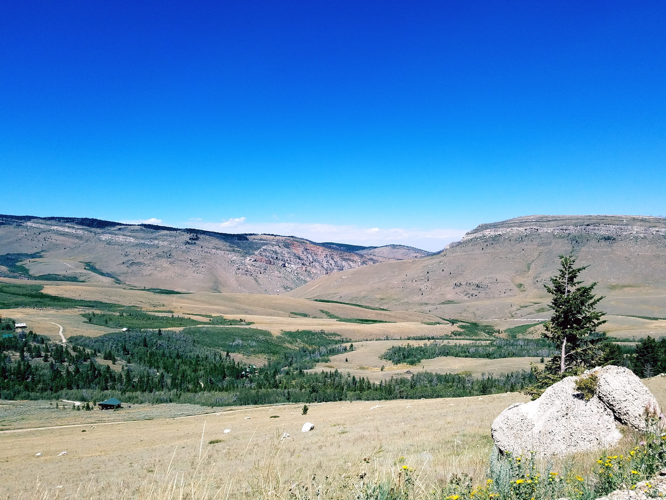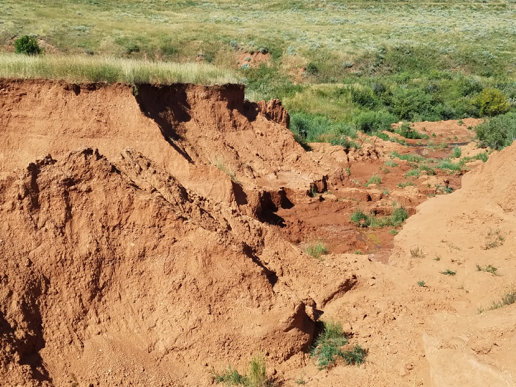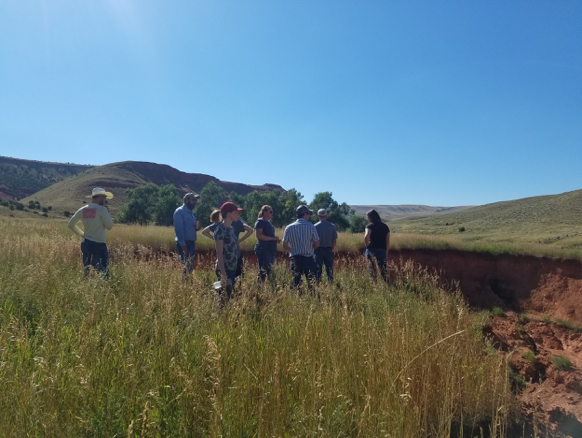After spending a week in Sheridan, the crew took off towards Red Canyon Ranch in south central Wyoming. Iron rich, red valleys appropriately give Red Canyon Ranch its name. Owned by The Nature Conservancy, the ranch is used for testing best conservation grazing practices and research. In addition to cattle, the area is home to large game animals including moose, bighorn sheep, elk, mule deer, and antelope. Miles of streams and rivers home trout populations and occasionally the controversial beaver.

Red Canyon Ranch
Beavers are often called ecosystem engineers because they transform landscapes by cutting down woody vegetation and building dams in waterways. Beaver dams can improve stream health and water quality by raising downstream groundwater levels, reducing stream flow velocity, preventing erosion, and providing habitat for wildlife. Despite the ecosystems services beavers provide, they are not always welcomed on ranches. Ranchers often do not want beavers on their property because they replace available grazing land with wetlands. However, the owners of Currant Creek Ranch expressed interest in bringing beavers back to the property as a method to improve stream health and increase habitat for native trout species and game species.
Most areas in Wyoming were once home to beavers, including Red Canyon Ranch and Currant Creek Ranch. John Coffman, the property’s current land steward, drove us around the canyon to see the variable stream conditions that can exist. From a cliff, we overlooked a healthy wetland area that was formed by beavers years ago. Another stop along the way was to a severely degraded part of the stream. We looked down at a steep 15-foot stream bed where the land had eroded away. We also visited a research site on the property to learn about alternative ways to improve stream health. The project involved Beaver Dam Analogs which are artificial structures that are built to create the positive ecosystem services that beaver dams can.

A severely eroded stream bank on Red Canyon Ranch. A 2-foot chunk of land broke off during the spring when water velocity was high. Structures like beaver dams help prevent this type of degradation by buffering high stream flow velocity during snow melt in the spring.
Visiting Red Canyon Ranch was monumental in understanding the variable conditions a riparian area can take on in Wyoming, and how beavers impact the landscape and hydrology of a stream. This knowledge helped us decide how to effectively collect data and manage riparian health at Currant Creek Ranch. Moving towards a more sustainable and healthy management plan, beavers can be an effective way to ensure stream health and overall quality of the property. The quarrel between beavers and ranchers will only cease existing when ranchers begin to see the full scope of benefits wetlands can bring to their property.

The crew looking over the side of the severely eroded stream bank.
